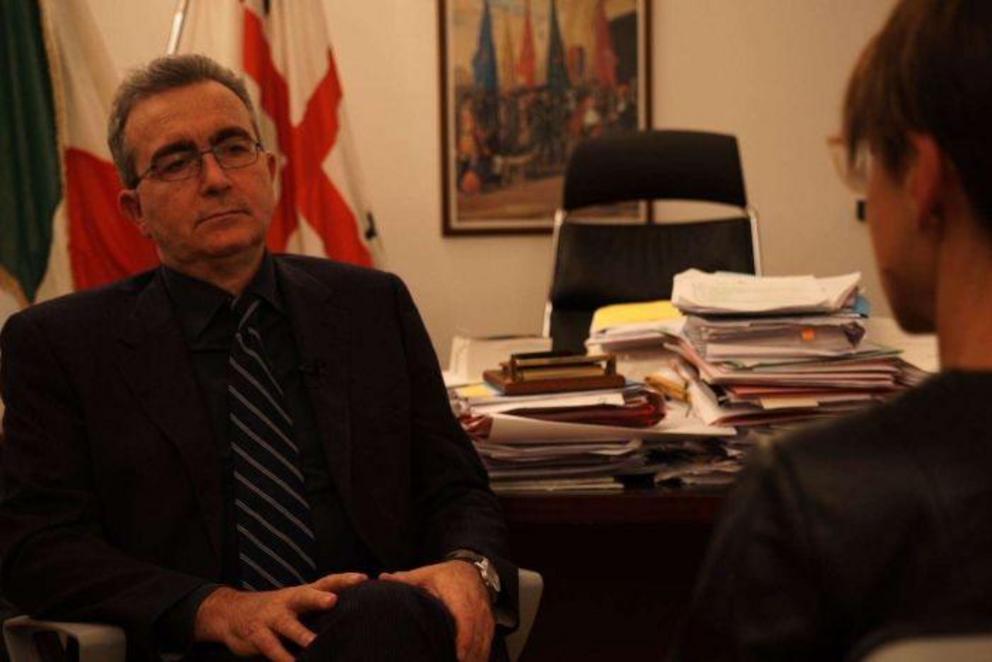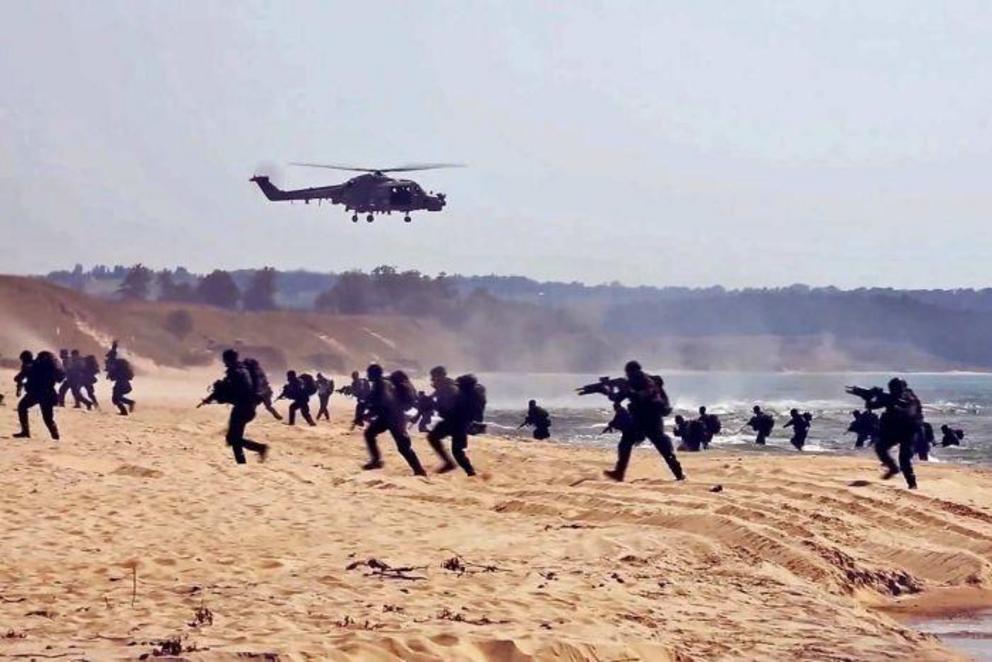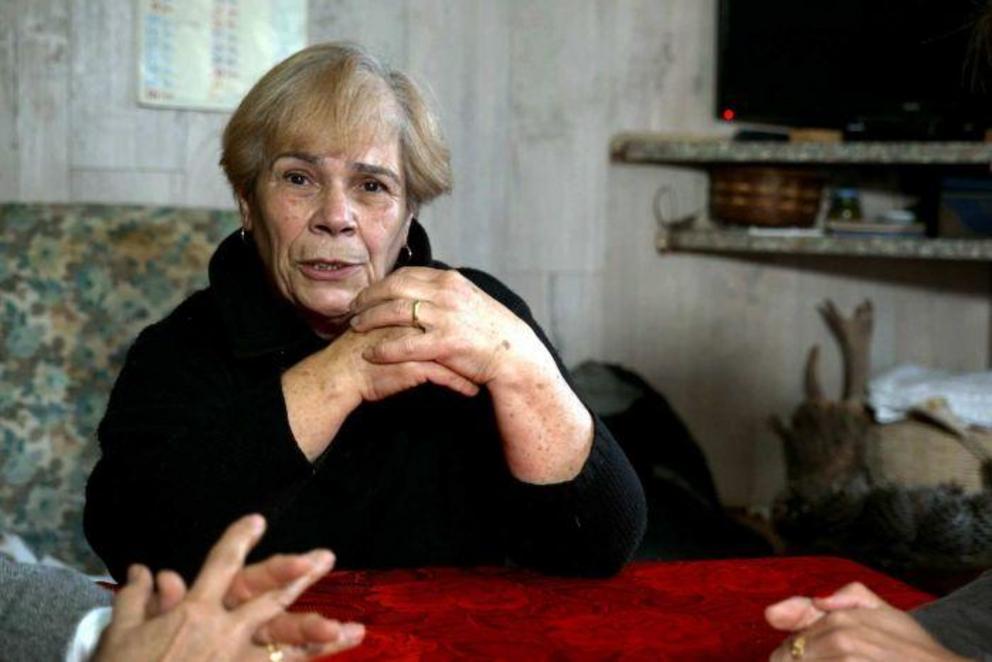Italian military officials' trial ignites suspicions of links between weapon testing and birth defects in Sardinia
Ms Farci's daughter Maria Grazia was born with severe health complications.
Maria Teresa Farci's legs start to shake as she reads aloud from the diary she kept that describes, in heartbreaking detail, the last moments of her 25-year-old daughter's tortured life.
Key points:
- Eight former commanders of a bombing range are before Italian courts
- Locals living near Quirra firing range describe multiple cases of deformities and cancer as "Quirra syndrome"
- Italy's army has dismissed a report linking exposure to Depleted Uranium to disease suffered by the military
"She died in my arms. My whole world collapsed. I knew she was sick, but I wasn't ready."
Her daughter, Maria Grazia, was born on the Italian island of Sardinia with part of her brain exposed and a spine so disfigured her mother has never allowed her photo to be published.
This was only one of many mysterious cases of deformity, cancer and environmental destruction that have come to be called the "Quirra syndrome".
Eight Italian military officers — all former commanders of the bombing range at Quirra in Sardinia — have been hauled before the courts.
It's unprecedented to see Italian military brass held to account for what many Sardinians say is a scandalous coverup of a major public health disaster with international consequences.
Bombs and birth defects — is there a link?
In the year baby Maria Grazia was born, one in four of the children born in the same town, on the edge of the Quirra firing range, also suffered disabilities.
Some mothers chose to abort rather than give birth to a deformed child.
In her first television interview, Maria Teresa told Foreign Correspondent of hearing bombs exploding at the Quirra firing range when she was pregnant.
Enormous clouds of red dust enveloped her village.
 Sardinia is known for its stunning scenery and pristine beaches.
Sardinia is known for its stunning scenery and pristine beaches.
Later, health authorities were called in to study an alarming number of sheep and goats being born with deformities.
Shepherds in the area had routinely grazed their animals on the firing range.
"Lambs were born with eyes in the back of their heads," said veterinary scientist Giorgio Mellis, one of the research team.
"I had never seen anything like it."
One farmer told him of his horror: "I was too scared to enter the barn in the mornings ... they were monstrosities you didn't want to see."
Researchers also found an alarming 65 per cent of the shepherds of Quirra had cancer.
The news hit Sardinia hard. It reinforced their worst fears while also challenging their proud international reputation as a place of unrivalled natural beauty.
The military hit back, with one former commander of the Quirra base saying on Swiss TV that birth defects in animals and children came from inbreeding.
"They marry between cousins, brothers, one another," General Fabio Molteni claimed, without evidence.
"But you cannot say it or you will offend the Sardinians."
General Molteni is one of the former commanders now on trial.
Years of investigation and legal inquiry led to the six generals and two colonels being charged with breaching their duty of care for the health and safety of soldiers and civilians.
After repeated attempts, Foreign Correspondent was refused interviews with senior Italian military officials and the Defence Minister.
Governements earning money by renting out ranges
Sardinia has hosted the war games of armed forces from the west and other countries since sizable areas of its territory were sectioned off after World War Two.
Rome is reported to make around $64,000 an hour from renting out the ranges to NATO countries and others including Israel.
Getting precise information about what has been blown up, tested or fired at the military sites and by which countries is almost impossible, according to Gianpiero Scanu, the head of a parliamentary inquiry that reported last year.
Many, including current Defence Minister, Elisabetta Trenta, have previously accused the Italian military of maintaining a "veil of silence".
 Mr Mazzeo believes there is a link between health problems and military testing, but says proving this has been difficult.
Mr Mazzeo believes there is a link between health problems and military testing, but says proving this has been difficult.
Speaking exclusively to the ABC, chief prosecutor for the region, Biagio Mazzeo, said he is "convinced" of a direct link between the cancer clusters at Quirra and the toxicity of the elements being blown up at the defence base.
But prosecuting the case against the military comes up against a major hurdle.
"Unfortunately, proving what we call a causality link — that is, a link between a specific incident and specific consequences — is extremely difficult," Mr Mazzeo said.
What is being used on the bases?
A recent parliamentary inquiry revealed that 1187 French-made MILAN missiles had been fired at Quirra.
This has focussed attention on radioactive thorium as a suspect in the health crisis.
It's used in the anti-tank missiles' guidance systems. Inhaling thorium dust is known to increase the risk of lung and pancreatic cancer.
Another suspect is depleted uranium. The Italian military has denied using this controversial material, which increases the armour-piercing capability of weapons.
But that's a fudge, according to Osservatorio Militare, which campaigns for the wellbeing of Italian soldiers.
"The firing ranges of Sardinia are international," Domenico Leggiero, the research centre's head and former air force pilot, said.
"When a NATO country asks to use a range, it is also bound not to disclose what is used there."
 The military rents out parts of Sardinia to other armies for war games.
The military rents out parts of Sardinia to other armies for war games.
Whatever is blown up on the island's firing ranges, it's the fine particles a thousand times smaller than a red blood cell that are being blamed for making people sick.
These so-called "nanoparticles" are a new frontier in scientific research.
They've been shown to penetrate through the lung and into a human body with ease.
Italian biomedical engineer Dr Antonietta Gatti gave evidence to four parliamentary inquiries.
She has suggested a possible link between disease and industrial exposure to nanoparticles of certain heavy metals.
The World Health Organisation says a causal link is yet to be conclusively established and more scientific research needs to be done.
Dr Gatti said armaments had the potential to generate dangerous nanoparticles in fine dust because they are routinely exploded or fired at more than 3,000 degrees Celsius.
Inquiry confirms causal links
In what was labelled a "milestone", a two-year parliamentary investigation into the health of the armed forces overseas and at the firing ranges made a breakthrough finding.
"We have confirmed the causal link between the unequivocal exposure to depleted uranium and diseases suffered by the military," the inquiry's head, then centre-left government MP Gianpiero Scanu, announced.
 Ms Farci says her "whole world collapses" after her daughter's death.
Ms Farci says her "whole world collapses" after her daughter's death.
The Italian military brass dismissed the report but are now fighting for their international reputation in the court at Quirra where the eight senior officers are now on trial.
The ABC understands commanders responsible for another firing range in Sardinia's south at Teulada could soon also face charges of negligence as police conclude a two-year investigation.
Until now the military has been accused of acting with impunity.
Perhaps their reckoning has come.

